Have you wanted to find real buttermilk but failed to do so? The recipe for your favorite cookies requires it, but you are unable to find it in the store and don’t know how to make buttermilk? It actually is not that hard at all, and you are about to know everything about buttermilk and how to make it on your own. Grab your pen and paper and let’s get to it!
More...
Buttermilk VS Regular Milk: What’s the Real Difference?
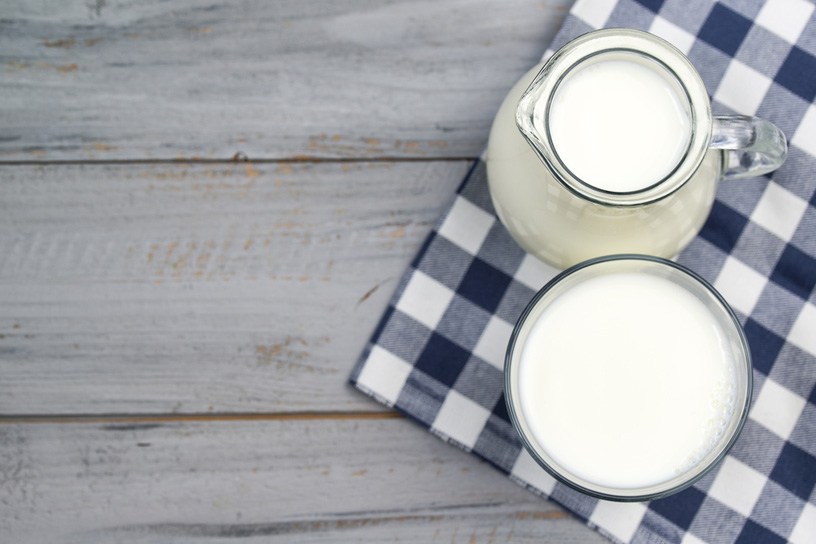
Buttermilk and regular milk differ in few aspects such as the nature of production, their taste, health benefits that go with it, and their main use. They look very the same, but you can see which one is which just by looking at their thickness. Buttermilk tends to be a lot thicker than regular milk.
- Production
- Taste
- health benefits
- use
Buttermilk can be found in two forms. One form is traditional buttermilk that refers to a number of dairy drinks, and the other form is cultured buttermilk. Traditional buttermilk is made of the liquid that is left of butter when it’s churned out of cream, while cultured one is made by artificial fermentation of the milk what causes it to be a lot thicker. Cultured buttermilk is most found in warmer climates such as India, Nepal, Pakistan, Middle East and the southern United States. Buttermilk today is usually made from cow’s milk.
Traditional milk is produced by mammals, and the most commonly used is from cows and goats. Milk can be produced fresh and packet with no additives, while most of it today is pasteurized and it has reduced fat. There are a lot of options, from full-fat milk to a very light diet options.
The Health Benefits of Buttermilk
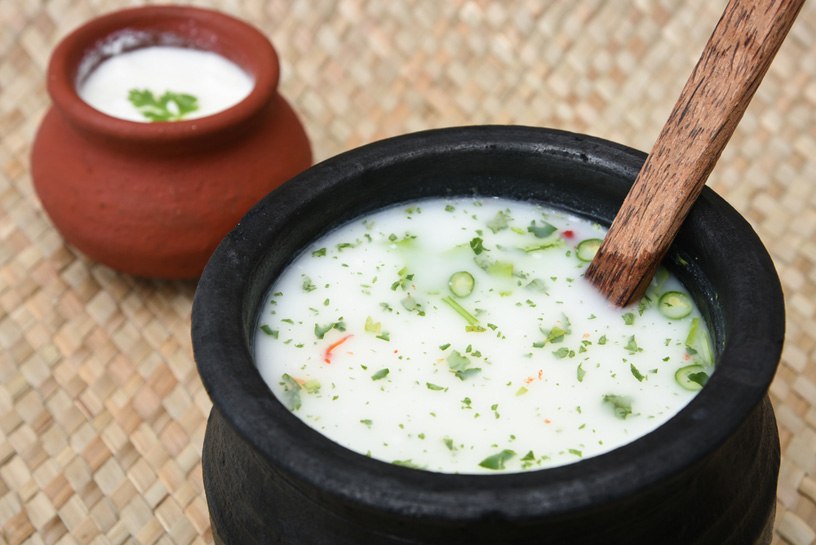
Even though you might presume from its name that buttermilk is high in fat, it actually is not. The thick texture of it also alludes that it might contain a lot of fat, but it has very low amounts of fat in it. The nutrients found in buttermilk are very similar to those in the regular milk, but they are a bit different in health benefits.
#1. Healthy Digestion
With its probiotic ability, buttermilk can provide a healthy digestion. It enchases the growth of bacteria that are essential for probiotic properties in the colon. The bacteria helps intestine and the whole digestion tract to be healthy and save it from infections caused by microorganisms such as Helicobacter pillory. This bacteria is commonly known for causing trouble in the stomach.
#2. Immune System Boost
While the probiotic content of the buttermilk keeps the digestion tract healthy, it also boosts the entire immune system and provides the protection from infections caused by pathogens. It also contains zinc which improves the immune system and strengthens the immune cells.
#3. Maintaining Strong Bones
Buttermilk helps you keep your bones healthy due to the calcium found in it. Calcium is found in very high levels in buttermilk which is great to help the bones keep their mass and firm condition, so they are not easy to break. By taking enough calcium every day, your bones will be firmer and stronger, so they won’t be broken easily by simple accidents like falling down.
#4. Healthy Skin
Buttermilk along with other nutrients contains a lot of protein, vitamin C, and antioxidant which nourishes the skin and makes it look smoother. This is why buttermilk is also used in the cosmetic and skin care products. Buttermilk can be used as facemask and face cleanser what results in the smooth and glowing skin.
#5. Healthy Pregnancy
Taking buttermilk once a day can be a great health boost to the mom and the growing child. With only one serving mother can intake a lot of protein, calcium, probiotic, minerals and vitamins. Folate is also found in buttermilk, and it can improve the development of the brain and other organs of the fetus.
#6. Helps with Upset Stomach
After eating spicy food or any other that makes your stomach feel sick, take a cup of buttermilk to ease the trouble. Amino acids and protein in buttermilk bind chemical substances in the food and protect the stomach.
#7. Keeps the Heart Healthy
Buttermilk contains potassium which has an important role in maintaining normal blood pressure and a steady heartbeat. By ingesting potassium in buttermilk, you can prevent various heart diseases in the future.
#8. Lowers the Cholesterol
Globule is a milk protein found in buttermilk who binds the bad cholesterol keeping it away from blood vessels. By consuming buttermilk after the meal which had heavy food with high amount of cholesterol, you will stabilize the cholesterol digested.
#9. Body Rehydration
While it has no allergic properties and it doesn’t cause any digestion problems, buttermilk can rehydrate your body as well. It can be used to make shakes that can provide plenty energy and nutrients for the hot and physically demanding day.
#10. Maintains the Normal Metabolism
With a high content of complex of B vitamins, buttermilk helps the body maintain the normal functions of metabolism. B vitamins are components of metabolic enzymes that help the body produce energy for proper functionality of body cells.
#11. Helps with Insomnia
Magnesium is important mineral for nervous system control and for soothing and relaxing it which can help in a significant way to a good night sleep. Buttermilk contains magnesium and consuming it before going to sleep can help you get rid of insomnia.
#12. Improves the Vision
For healthy eyes and a clear vision your body needs vitamin A. This vitamin is found in buttermilk, and by consuming it regularly a lot of eye disorders can be prevented, including the ones that come naturally by aging.
#13. Treating of Sunburns
When you experience sunburns and risen skin temperature, try rubbing buttermilk on the irritated surface. It will make the skin cool off and regenerate. After it’s applied, it will create a dry layer on the skin, just peel it off, wash the surface with cold water and apply buttermilk again until the pain goes away.
#14. Treating of Diarrhea
Consuming buttermilk while having diarrhea can speed up the process. Buttermilk is a true digestion system medicine, and it can be used with almost any digestion problem.
#15. Preventing Anemia
Anemia is lack of red blood cells that transport oxygen and nutrients throughout the body. Iron found in buttermilk has an important role in red blood cells production. With enough iron in the blood, red blood cells will maintain required levels for a normal functioning system.
#16. Preventing Cancer
Antioxidants found in buttermilk and its anti-inflammatory properties can prevent the development of cancer cells. By consuming buttermilk every day, you will have enough of antioxidants in your body to keep the whole system protected.
#17. Moisturizing the Hair
To give the hair shiny look and smoothness, you can apply buttermilk on your hair and leave it for a couple of minutes. After that, just rinse it with water, the nutrients should be soaked by the skin and hair will take it from there as food.
With all these benefits for the health, it’s also believed that buttermilk help with hemorrhoids, intoxications, anxiety, diabetes, muscle stiffness, worm infections and many other illnesses.
3 Ways to Make Real Buttermilk
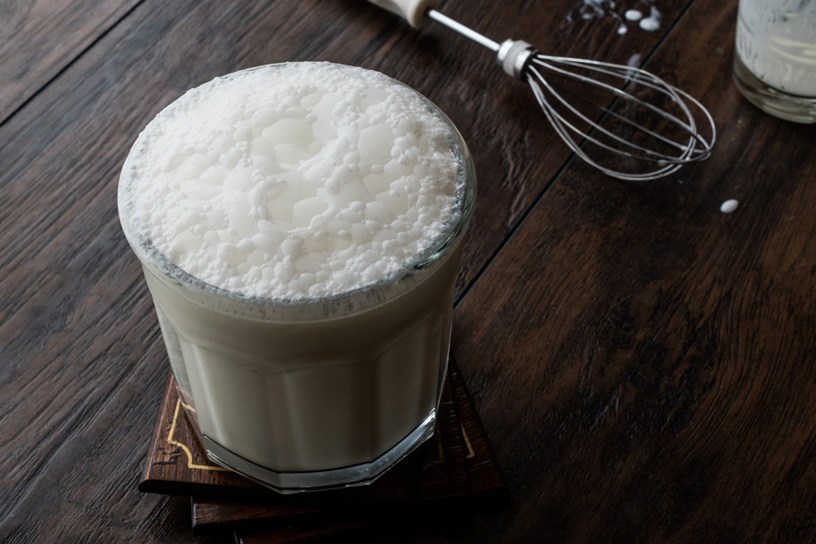
There are a couple of ways for making buttermilk, and these create the slight variations of the same end product. The best method to use is the one that will produce the best buttermilk for the occasion or your specific need. Here are the most common ways of making buttermilk.
1. The Best Way: Cultured Butter
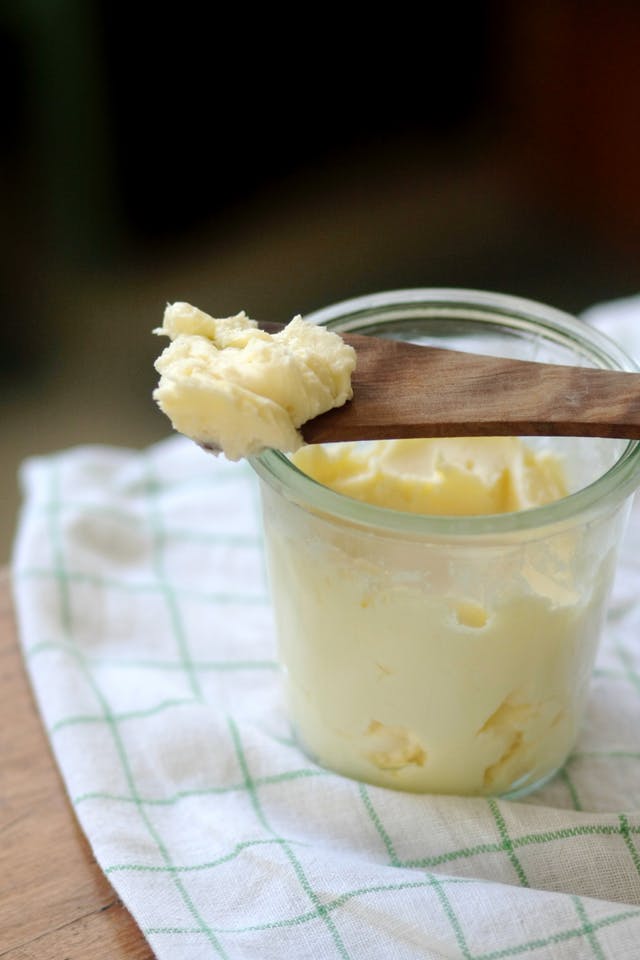
Via Thekitchn.com
The best way to make buttermilk is to make a cultured butter. Cultured butter will have a liquid byproduct which is cultured buttermilk. There are a number of options which can be used to make cultured butter, and each of these is suitable for the different type of buttermilk. It’s important to know that no matter the amount of buttermilk you’re aiming for, the proportion of 1:3 in favor of fresh milk should be your focal point.
Culture the cream with mesophilic aromatic cheese cultures. Heat the cream to 77 degrees F. Add 1/8 teaspoon of mesophilic aromatic type B culture or Flora Danica culture to a gallon of cream. Mix it well and culture at 74-77 degrees F for at least twelve hours.
You can culture the cream with milk kefir grains, kefir starter culture or finished milk kefir. If you want to use grains, add one teaspoon to 1-4 cups of cream. For finished milk kefir, add one tablespoon milk kefir per cup of the cream. Culture for 12-14 hours. With some types of products, even 24 hours of cultivation is advised.
Now you can proceed to turn the cream into butter. Before making the butter, place the cream into the freezer for a few hours. Put the cream into the bowl and mix it up with a mixer. Use the highest possible setting and mix it up without splattering the cream. Once the butter starts to form reduce the speed and allow the butter to form completely.
Wash the butter with clear water and press out the buttermilk. When the water starts to run clear, you got out all of the buttermilk.
2. The Most Popular Way
The most popular way is the simplest one. All you need to do is to buy buttermilk from the store, get a bowl (or any other container) take one tablespoon of it per one cup of fresh milk, stir it up and leave it to thicken on a room temperature.
The alternative to this method comes even simpler; instead of getting buttermilk, you can use lemon juice of vinegar and add to the fresh milk, and leave it to acidify for five minutes. Keep the ratio at one tablespoon / one cup. This alternative is excellent if you need a quick fix or a small amount of buttermilk for your recipe without leaving the house. Simple and effective. Still, you should know that this alternative method doesn’t produce true cultured buttermilk, but more acidified one, ideal for pastries and pancakes.
3. Other Creatives Ways
You can make it in a few different ways than the most common ones. You can buy a starter culture and add it to fresh milk. Let the milk sit at a room temperature, and it’s done (it will take several days for the process to complete, though).
Creating your starter culture is also very much doable, and it will create something with your own, personal touch. It does require several multi-step processes, and some patience. On the other hand, it’s quite simple – you just let your regular fresh milk to clabber, then add more, and wait again. Repeating this process for six to 12 times brings you to the point where you have a perfectly good homemade culture which you can keep in your fridge for a while and use for creating buttermilk easily.
Starter culture can be obtained on many places, both online and offline. Just look for the market with fresh dairy products, and you’ll find it. One thing though, never purchase a culture that lasts more than three weeks. That indicates a lot of preservatives and chemical components are added for prolonged lifetime, which will affect the quality and taste of your buttermilk.
You can also use several substitutes for buttermilk to make it at home. There are so many good substitutes which can be made quite fast and easy; you will get to know all of them in the rest of the guide.
Bonus Tip: Culture several times few batches of milk until it thickens and tastes sour.
Buttermilk Cooking Tips, Hints and Storage
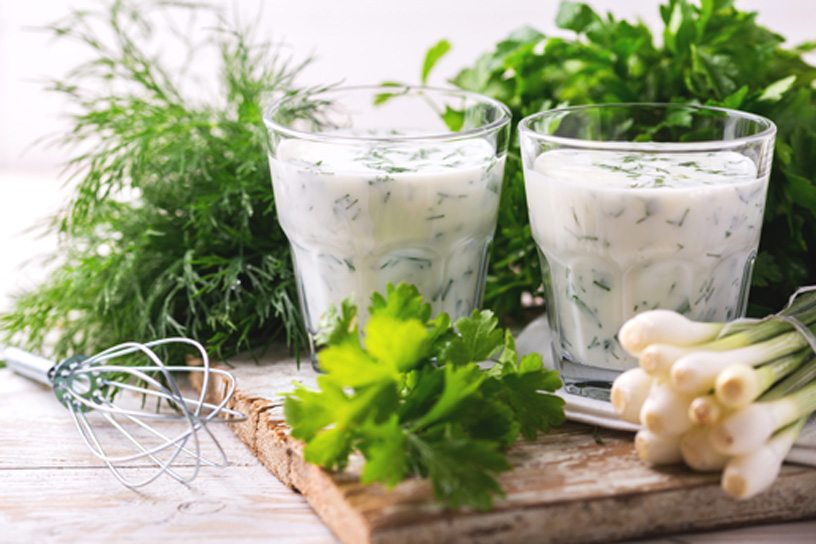
1. Cooking Tips & Hints
Buttermilk is excellent in baked cakes and as a salad dressing. It gives the rich and soft taste with much fewer calories than milk or cream. The flavor of buttermilk goes great with fruits such as cherries, peaches, and pears. The sweetness of fruits neutralizes the sour taste of the milk.
You can use it as a marinade, and especially with poultry. A lot of chefs prefer to use buttermilk over milk prior to frying and baking of meat, fish, and poultry. Before you try to experiment on your own, try to find recipes that involve buttermilk instead of just substituting it for milk.
2. Storing Buttermilk
Regular milk can stay fresh for a long time; this is not the case with buttermilk. In most of the cases, buttermilk is used in small portions, which leaves a lot to spare. It takes up to two weeks for buttermilk to reach its high acidity level.
Once the packaging is opened, it should be used within seven days for drinking. As for baking purposes, it can be used even after the expiration date. Right after you use it, you should store the rest of buttermilk in the refrigerator, avoid leaving it outside of the fridge for any amount of time.
If you have a lot of leftover buttermilk and you don’t plan on using it for a while, you can safely freeze it up to three months. If you use it only for certain recipes, you can portion it out and freeze the separate portions, so it easier for use. You can even pour it into an ice cube tray and freeze it.
When you want to use frozen buttermilk, put it in the refrigerator and leave it to thaw, or just put in a microwave on a low for a quick defrost. Be sure to mix it up, so the whole mass is liquid. Have in mind that frozen buttermilk tends to lose texture and taste, so it’s better to use it for baking only.
For shelf storage, you can get buttermilk in the form of powder. Powdered buttermilk should be easily found in the grocery store; it’s dehydrated buttermilk who can last up to a whole year. As frozen buttermilk, powdered one is also best for baking purposes.
You can tell if buttermilk has gone bad by its lumpy texture and a strong sour smell. If you notice this trait, you should not use it for any purpose. If you are not sure, however, cook it before consuming it.
Q&A
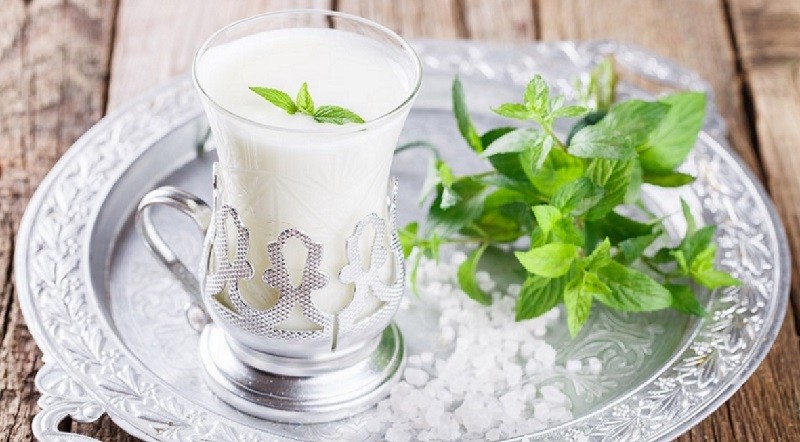
Via wowremedies.com
Q: Is buttermilk safe to drink?
A: Absolutely. Not only is it safe, but it also has numerous health benefits, even more than regular milk.
Q: Why does buttermilk foam up when baking soda is added?
A: Because of the acidic nature of buttermilk. Baking soda reacts with acid which results in releasing of CO2, causing the foam to form.
Q: When buttermilk goes bad?
A: It’s safe for drinking up to seven days, and it can be used for baking even after the expiration date. It doesn’t have to go bad every time after the same period, but you can clearly notice it has gone bad by the way it smells.
Q: Can it just be used for drinking?
A: Of course, if you don’t mind the taste. It has been used as a drink for centuries. The only thing why it’s more used for baking and cooking is because of its sour taste.
Q: Can it be frozen?
A: Yes. It can be left frozen up to three months, but it’s not recommended to be left in the freezer for such long time since it tends to separate. It also tends to lose its flavor over time, so it’s better to use defrosted buttermilk for baking than for drinking.
Q: Where can real buttermilk be found?
A: There’s a lot of places where you can find it; supermarkets’ healthy sections, all-natural ingredient sections, and stores with healthy food choices. You can also make it yourself; check out the guide above.
Pro Tips – Advice from Famous Bloggers
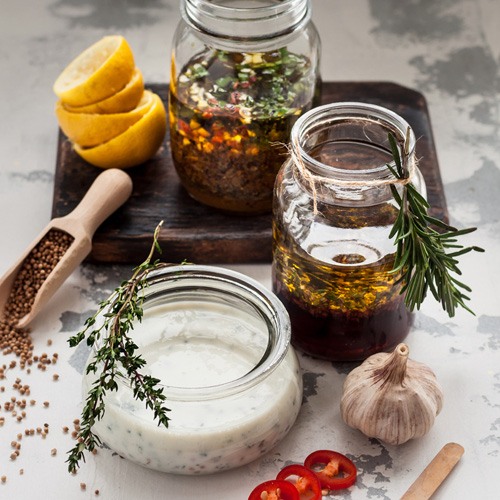
The best way to become good at something is to learn from the best. So checking out a few tips and tricks from the pro chefs and experienced kitchen enthusiasts could only be a good thing.
I have combed through a few articles from top bloggers and picked out a few hidden gems for you.
If you want to check out a fully illustrated and video guide on how to make buttermilk with lemon juice and vinegar check out Emma’s post on TheKitchn.com. This recipe is simple, but the ingredients bring out the flavor and texture.
For an excellent guide on homemaking buttermilk with heavy cream check out TheBalance.com where Erin has wrote about his way of making the best real homemade buttermilk. Heavy cream brings out that rich texture that makes buttermilk unforgivable.
If you thought about making some buttermilk biscuits, there’s a pretty straightforward blog post on how to make it with lemon juice on Tiphero.com. Now that’s an interesting idea!
When buttermilk is the only ingredient that you’re missing for your recipe, you should make a quick substitute. There are few different ways to do it, and Katie from GoodLifeEats.com has a blog post ready for you!
Have you ever tried cinnamon coffee cake? Homemade buttermilk is the main ingredient for it, and Amanda from LittleHouseLiving.com has instructions ready with a few recipes as well.
Best Buttermilk Substitutes Recipes
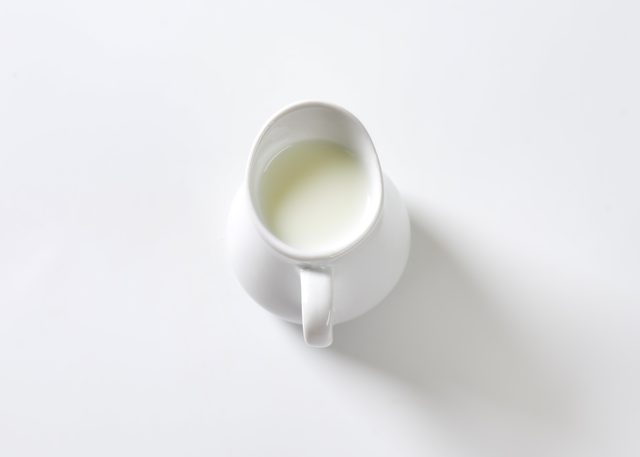
Via leaf.tv
The most widely known and popular alternative to buttermilk is white vinegar. You can make it by gently warming up low-fat milk from low to medium heat gradually. After its curdled pour the milk into measuring cup, proceed to add one tablespoon of white vinegar into the cup. Mix it all together and stir it for a couple of minutes until the mass is grainy. The milk will slowly become acidic. Let it sit around ten minutes before using it.
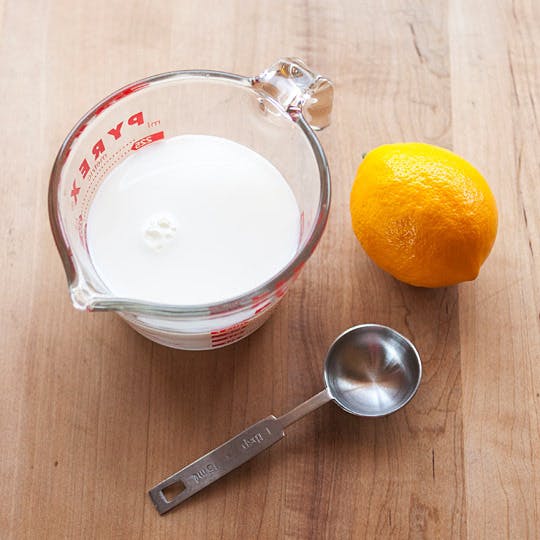
Via thekitchn.com
One more great substitute for buttermilk is lemon juice. The procedure is the same as with the vinegar, just use the lemon juice instead. For bigger portions use 1.5 or 2 tablespoons of lemon juice to 2 cups of milk.
As a last resort, if you don’t have anything else around, orange juice can be a good substitute also. It’s least acidic out of all probable substitutes.
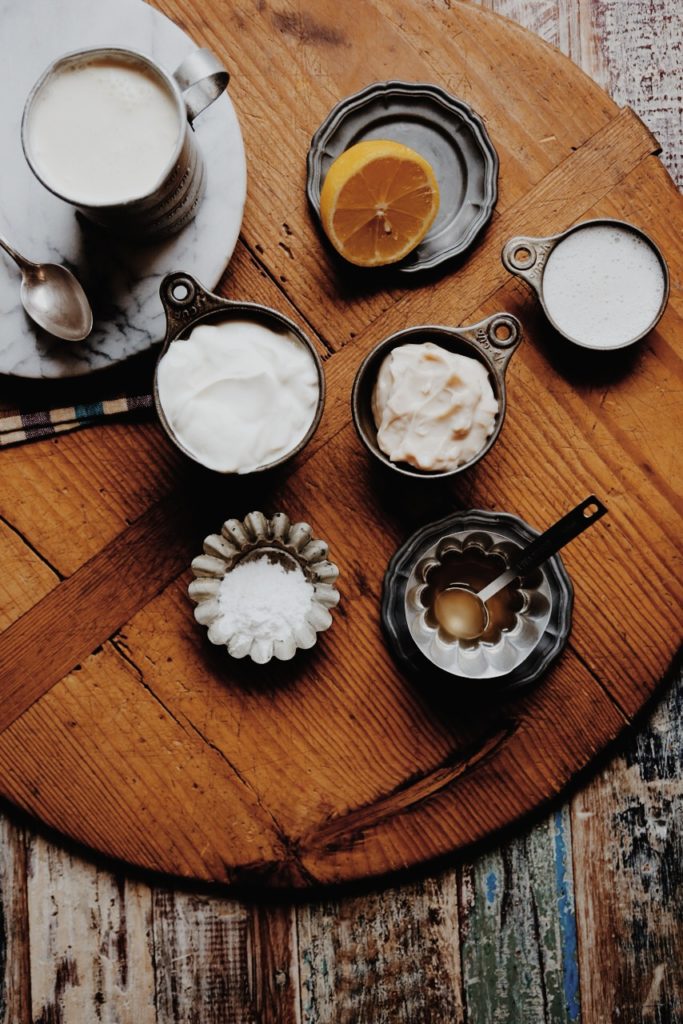
Via joythebaker.com
You can use plain yogurt to combine with milk in a simple making process to have buttermilk as a result. You can use 2/3 cup of yogurt and mix it with 1/3 cup of milk. Stir them up until they are smooth, you can also use Greek yogurt. Leave the mix for a couple of minutes before using it.
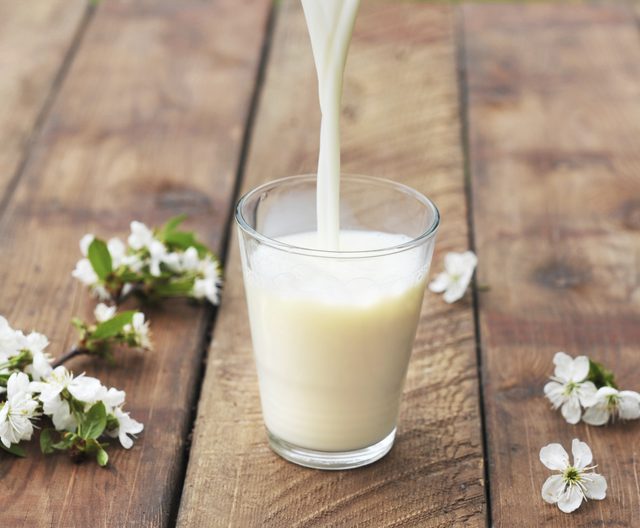
Via livestrong.com
For low-fat vegan option, you can use almond milk. Use unsweetened almond milk and add one or two tablespoons of apple cider vinegar or lemon and mix it up.
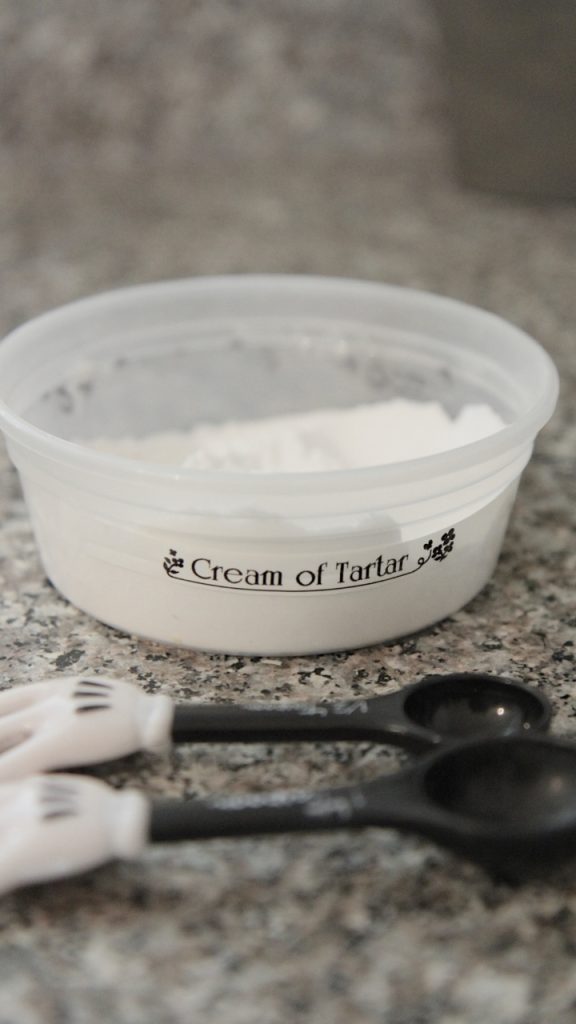
Via Divascancook.com
Tartar is a great substitute as well. Use one cup of milk and ¾ teaspoon of tartar. To make the mixture smooth, add two tablespoons of milk to tartar cream, and then add the rest of the cup of milk.
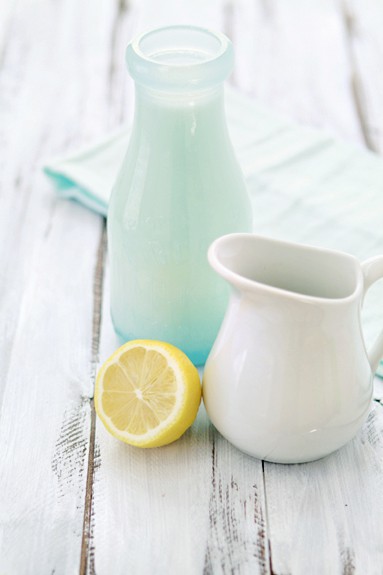
Via goodlifeeats.com
The simplest way to make a buttermilk substitute is by using sour cream. Use the same amount of sour cream and water and blend them together until the mixture is smooth.
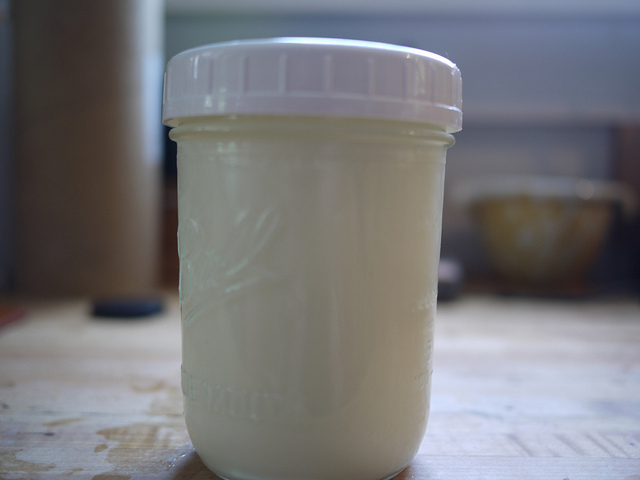
Via momprepares.com
Powdered buttermilk is a form of buttermilk that is dehydrated, just add the water to it, mix it up, and it’s done.
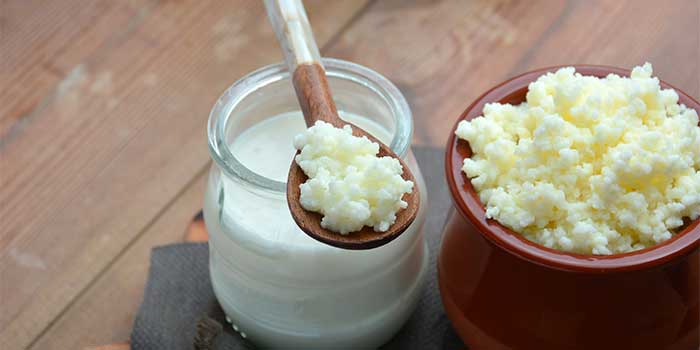
Kefir is an uncommon substitute, but it can be used to make buttermilk. One tablespoon of kefir substitutes one tablespoon of buttermilk. It has the similar taste as buttermilk, and it can be used in the recipes as a good substitute.
Even though it has very different taste, canned coconut milk can be used as a substitute in some recipes. Note that canned coconut milk is not acidic, so check the recipe if it requires the acidity of the buttermilk.
Conclusion
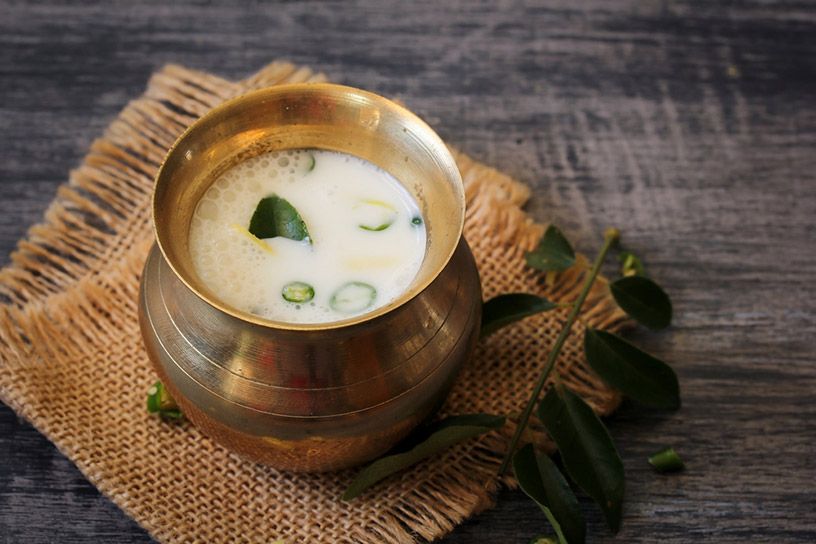
There you have it folks, the most in-depth guide to making buttermilk, and everything you need to know about it. With this guide in your hands, you can make a fabulous buttermilk every time, and utilize it to the max. You’ll become a better chef, and make better meals.
Did you like the guide? Would you add something to it?
If you did, I’d be really happy if you could share it to your friends; someone might learn about this as well, and we’ll empower each other!
Until next time, enjoy some nice buttermilk!
Resources:
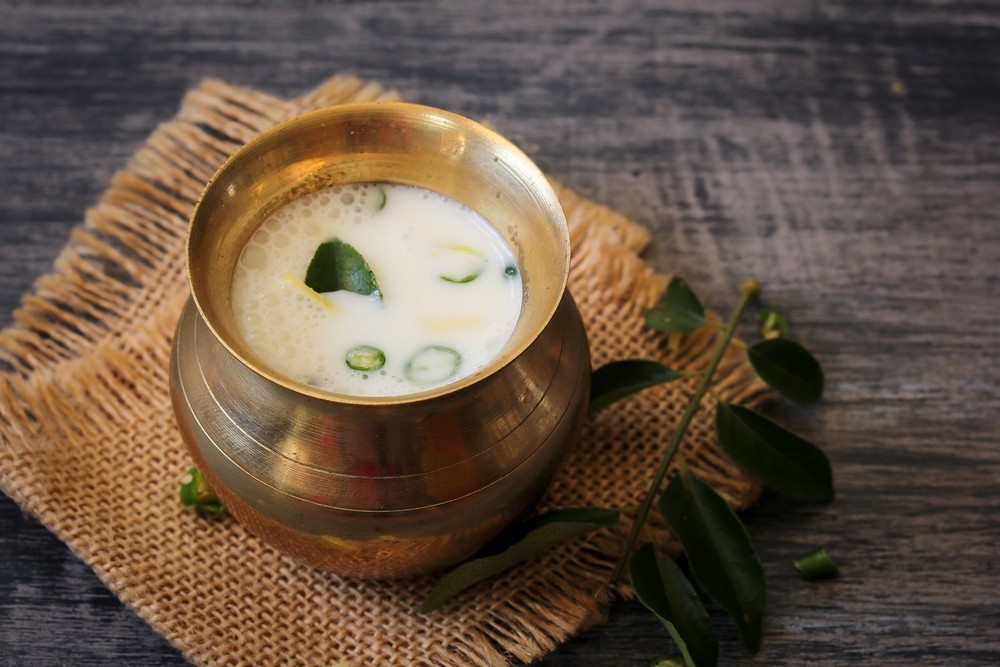





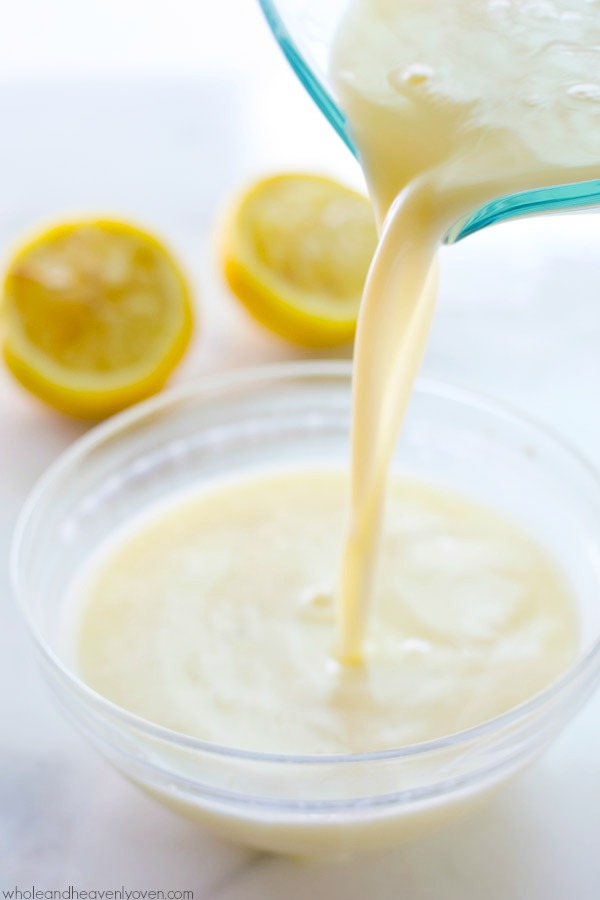
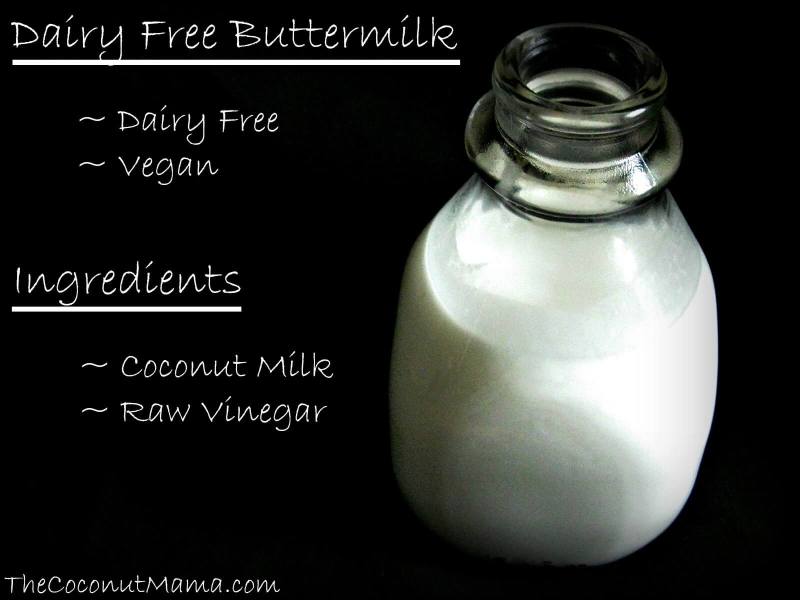
Leave a Reply